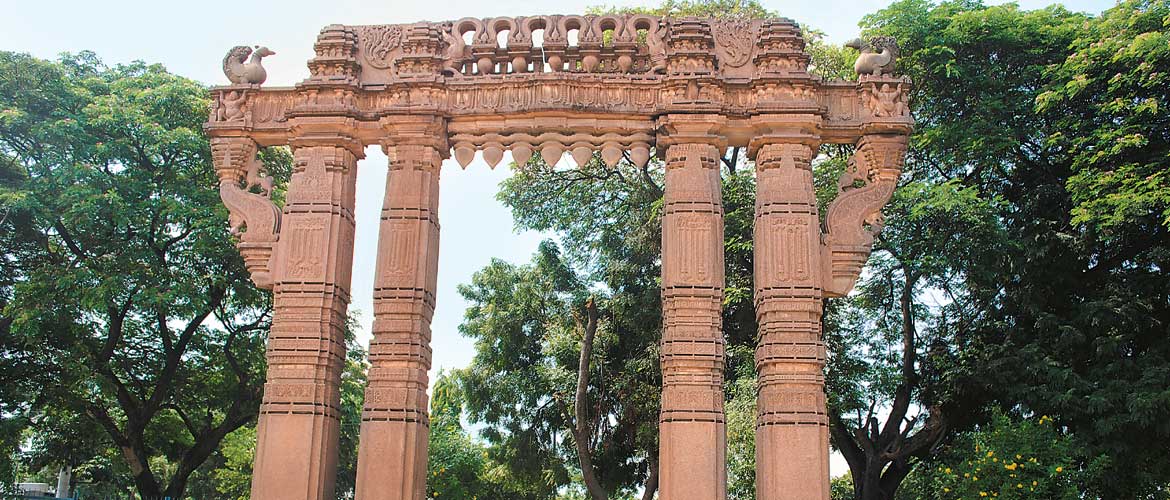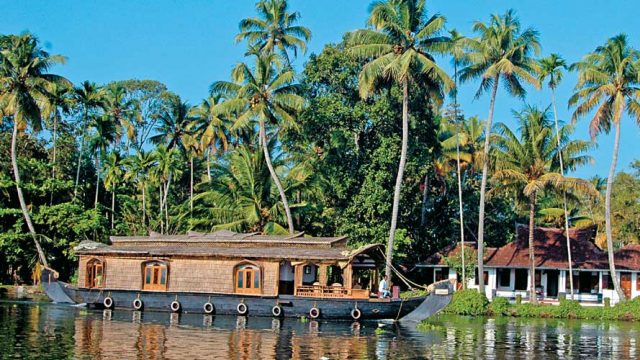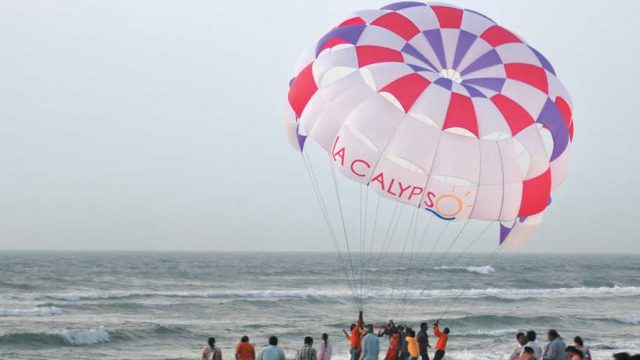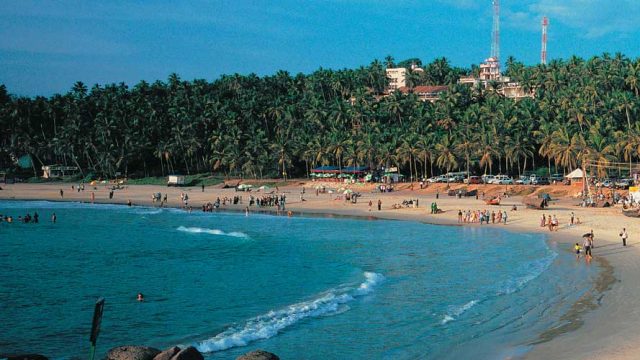Warangal encompasses every-thing that perfectly describes Telangana – a historic legacy, revolutionary nerve and spicy
The city’s history dates back to about 12th century CE, when the Kakatiyas built the Warangal Fort and subsequently left behind some architectural master-pieces and infrastructure in this region, which have no parallel in the state. The region is also home to several handicrafts, which Telangana is famous for – Pembarthi metalwork and Cheriyal paintings both belong to this district.
Today, Warangal is famous for its educational institutions. The city is home to the prestigious Kakatiya University, Mahatma Gandhi Medical College and a National Institute of Technology. It is the second-fastest growing city in Telangana, after Hyderabad, and in 2014, it was included in the Heritage City Dev-elopment and Augmentation Yojana by the Government of India, along with 11 other heritage cities.

THINGS TO SEE AND DO
Warangal Fort
Located in the Mathwada area of Warangal, the fort is around 12km away from the centre of the city. It is believed that the construction of the fort was completed in the early 13th century CE.
It is said that originally, this sprawling complex contained a total of seven forts within its area, amongst which were raati kota (stone fort), matti kota (sand fort), neeti kota (water fort), ituka kota (brick fort), kanchu kota (brass fort) and kampa kota (fenced fort). Over the years, only the raati kota and matti kota have survived. About 360 wells and 360 temples were originally built for the people who lived in the fort’s premises, although most of them cannot be seen now.
There are several places to see within the fortifications – the central remains of Swayambhu Devalayam (temple), Khush Mahal, Ekasila hill and a few wells such as the Akka Chellela baavi, Kodi Pinjala baavi and Sringara baavi. The Swayambhu Devalayamu now forms the most important part of Warangal Fort. The floor plan of the temple’s remains, which include the main mandapam, Kalyana mandapa and the swayambhu shivalinga, indicates the use of the Kakatiyan style of temple architecture. A sound and light show is held here every evening. The show takes visitors through the history of the Kakatiya dynasty and fort.
Adjacent to the temple complex is the Khush Mahal. The building is now used by the ASI as a museum to showcase statues of gods and cannon balls that were found in the fort.

Thousand Pillar Temple
As evident from its name, the Thousand Pillar Temple in Hanmakonda literally has a thousand beautifully carved pillars placed in geometrically planned positions in its main mandapam and Kalyana mandapa. A foundation stone at the entrance talks about the temple’s history in the ancient language of Pali.
The construction of the temple began in 1048 CE and ended in 1163 CE. The main sanctum in the mandapam contains shrines for Surya, Vishnu and Shiva. However, the statues of Surya and Vishnu, which were made of gold, were supposedly stolen. The only thing that remains is the shivalinga. The Nandi (bull) here is carved out of a single stone.
Photography ₹25
Tip Ask the guard at the entry gate for a guide. The guides can shed more light on the architecture
WHERE TO STAY
Warangal has a few good hotels and a host of budget accommodations. Since there is a huge influx of visitors to Warangal during the summer holidays and the Shivaratri period, it would be wise to book your hotel rooms in advance. Hotel Ashoka (Tel: 0870-2578491-94; Tariff: ₹1,600–3,289) in Hanamkonda offers AC rooms, a restaurant, coffee shop and fitness centre. Hotel Ratna (Tel: 2500645-49; Tariff: ₹1,100–2,000) on MG Road is is slightly cheaper.
One of the best hotels in Warangal is Hotel Grand Gayathri (Tel: 2505999, Cell: 09703114646, 09866633611; Tariff: ₹2,000–4,000), which offers neatly decorated rooms and a restaurant. It is very close to the railway station. City Grand Hotel (Tel: 2454587-89, 6588777; Tariff: ₹1,450–2,650) on SVP Road has well-appointed rooms with Wi-Fi and a restaurant serving contemporary cuisine. Nakkalgutta area has several good options. Hotel Suprabha (Tel: 2573888, Cell: 07702783333; Tariff: ₹2,000–3,400) is a boutique hotel with good food. Hotel Landmark (Tel: 2546331-33; Tariff: ₹1,595–1,995) offers a restaurant, coffee shop, bar and Internet. Telengana Tourism’s Haritha Kakatiya Hotel (Tel: 2562236-37, Cell: 09951022203; Tariff: ₹2,104–3,127) is another decent option. It has a restaurant, bar and gym.
WHERE TO EAT
The Kanishka Coffee Shop at Hotel Ashoka offers decent breakfast, lunch, dinner and snacks. If you are in the mood for dal, rajma and roti, head to the Kadambari Restaurant, which also offers Chinese and Continental. But when in Warangal, do as Orugallus do and eat their traditional cuisine.
Food at Suprabha’s Snowball Restaurant is also quite good and you get the usual multi-cuisine menu. Their Cruise Coffee Shop serves excellent vegetarian food. City Grand’s signature restaurant Sun+Moon serves both vegetarian and non-vegetarian fare.
Among the standalones, Kalinga Dhaba and Haveli near the NIT Gate offer good vegetarian and non-vegetarian meals. Near the NIT Petrol Pump is Seasons Restaurant with good ambience and a great variety. If you want to try biryani, Khursheed in Mandi Bazaar and New Shalimar on MG Road are both popular. All along the main road in Warangal, you will find thelas selling mirchi bajjis. These are really spicy, but very tasty. Warangal is famous for its namkeen snack sarvapindi, made of rice flour, onions and chillies. A bit on the salty side, this snack is the perfect thing to carry while on the move.
AROUND WARANGAL
Ramappa Temple (66km)
The construction of the temple started in 1173 CE and finished in 1213 CE during the rule of Kakatitya king Ganapathideva. The temple is also known as Rudreswaralayam, named after the resident deity Rudreswara.
There are several elements in this temple’s architecture that make it unique. There are 12 black stone statues of madanikalu (dancing figures) perched atop pillars at the entrances to the main mandapam (pavilion). The facial expressions and body postures of the madanikalu are carved with great attention to detail. This particular temple has a gopuram, which is not a common sight in other Kakatiya temples. The gopuram is made of bricks and supposedly has the capacity to float in water. The temple itself is built on a sandstone box, which keeps it from sinking during earthquakes. The outer walls of the main mandapam have intricate carvings of elephants, dancing figurines, Egyptian pharaohs, stars and Jain tirthankaras amongst others.
FAST FACTS
When to go In winter. The rest of the year it’s as hot as Hyderabad
Tourist offices
Tourist Information Centre, Telangana Tourism, Tank Bund Road, Secretariat, Hyderabad, Tel: 040-23325152, Cell: 09848125720
District Tourism Office, Telangana Tourism, Nakkalgutta, Hanamkonda, Warangal, Tel: 0870-2571339, Fax: 2571229, W telanganatourism.gov.in
STD code 0870
GETTING THERE
Air Nearest airport: Rajiv Gandhi International Airport at Hyderabad (174km/ 3hrs). Taxi costs approx ₹3,000
Rail Warangal Station – plenty of trains connect Warangal to Hyderabad, New Delhi, Mumbai, Nagpur, Bengaluru, Chennai, Thiruvananthapuram, Coimbatore, Patna, Jaipur and many other cities in the country. Important trains serving the region are Kerala Express, GT Express, Tamil Nadu Express, Konark Express, Dakshin Express and Sanghamitra Express
Road NH202 connects Warangal to Hyderabad Bus TSRTC has frequent bus services to Warangal from Mahatma Gandhi Bus Stand (Tel: 040- 23434263/ 69) in Hyderabad
Unmissable India
Warangal
Telangana





